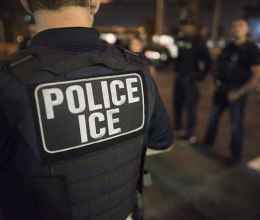This column was originally published on 7/29/16 in the Denver Business Journal.
In any discussion of improving perceptions of the 16th Street Mall, it is essential to remember that the Mall is a public space, and therefore must be open to all segments of the public. Any attempt to drive away some people because of how they look or how much money they have is an unacceptable abuse of individual freedom and civil liberties.
It is also important to remember that for the most part, the 16th Street Mall is doing well, especially compared to pedestrian malls in many other cities. It is bustling with people, it is lined with businesses, not empty store fronts, and the free shuttle plays a valuable role not only on the Mall itself but as an essential part of Denver’s transportation system.
To the extent there is concern, it seems to be primarily directed at people on the Mall who are visibly poor or homeless, and the discomfort or perception of a lack of safety that some people feel as a result. In response to perceived safety concerns, police presence on the Mall has increased, and city officials have promised an increased crackdown on harmless activities like sitting, lying down, or leaning against walls. Ordinances that turn these non-violent behaviors into crimes lend themselves to discriminatory enforcement based purely on how people look, which should have no place in our city.
In any case, policy should not be based on false or exaggerated perceptions. Just as crime rates are down nationally by quite a bit yet some people imagine that crime is rapidly rising, the idea that the Mall is dangerous is much more a matter of perception than reality. Quick response to actual violent crime should be the priority of police, not ticketing people or moving them along because they look poor and their presence makes people feel unsafe or uncomfortable. To the extent that perception matters, a large, visible police or private security presence is intimidating and can backfire on public perception, giving the impression that the Mall must be a dangerous place to require so much policing.
So what to do about the concerns and discomfort that some people feel? It would help to recognize that as Denver grows it should be expected to feel like a larger city, not a controlled suburb. Older and grittier East Coast cities thrive as tourist destinations because of all they have to offer, not because they feel pristine. It would be better to highlight the attractions of Denver and the Mall rather than to highlight exaggerated dangers or perceptions of crime. One of Denver’s attractions is as a city of freedom and rights, not heavy-handed government, and that should be preserved.
As for homelessness, the solutions lie not in criminalization and aggressive policing, but in serious - not token - investments in housing and services. Many cities and nations in the world have essentially eliminated homelessness, so it is not impossible to do. As a thriving city in a wealthy nation, Denver can do much more than it is doing or proposing now. And the tax money that is currently being spent to sweep up, force out, arrest, and even jail people for simply existing would be much better spent investing in solutions to the root causes of poverty and homelessness.
In the meantime, we may need to feel some discomfort about the presence of people who are homeless or living in poverty. Not because they are a great danger—it is people without a home who are in the most vulnerable situation—but because we have not yet found the will to truly address poverty and homelessness as a city or as a nation. As a great city feeling growing pains, Denver should address challenges in ways consistent with our values, not by sweeping away people we don’t want to see and pretending that doing so solves anything at all.
Nathan Woodliff-Stanley, and ordained Unitarian Universalist minister, is the Executive Director of the American Civil Liberties Union of Colorado.
Protect Freedom on the 16th Street Mall
Related Issues
Related content
HB25-1276 Court Actions Related to Failure to Appear in Court
April 1, 2025Beagle v. People (Amicus)
March 17, 2025Densmore v. People & Frazee v. People (Amicus)
February 10, 2025SB25-062 Failure to Appear Charges in Municipal Court
January 24, 2025HB25-1026 Repeal Copayment for Department of Corrections Inmate...
January 24, 2025